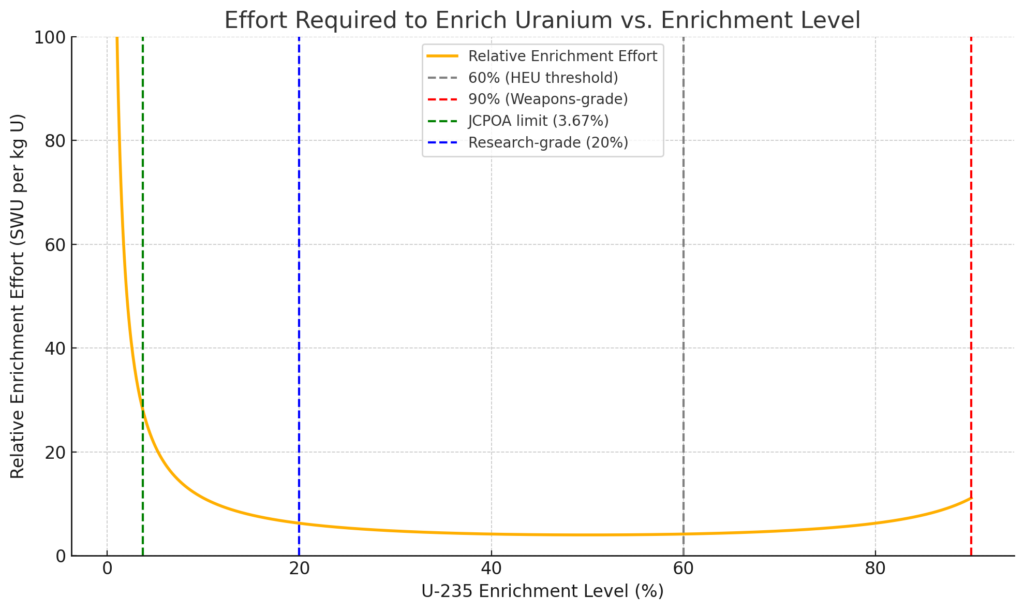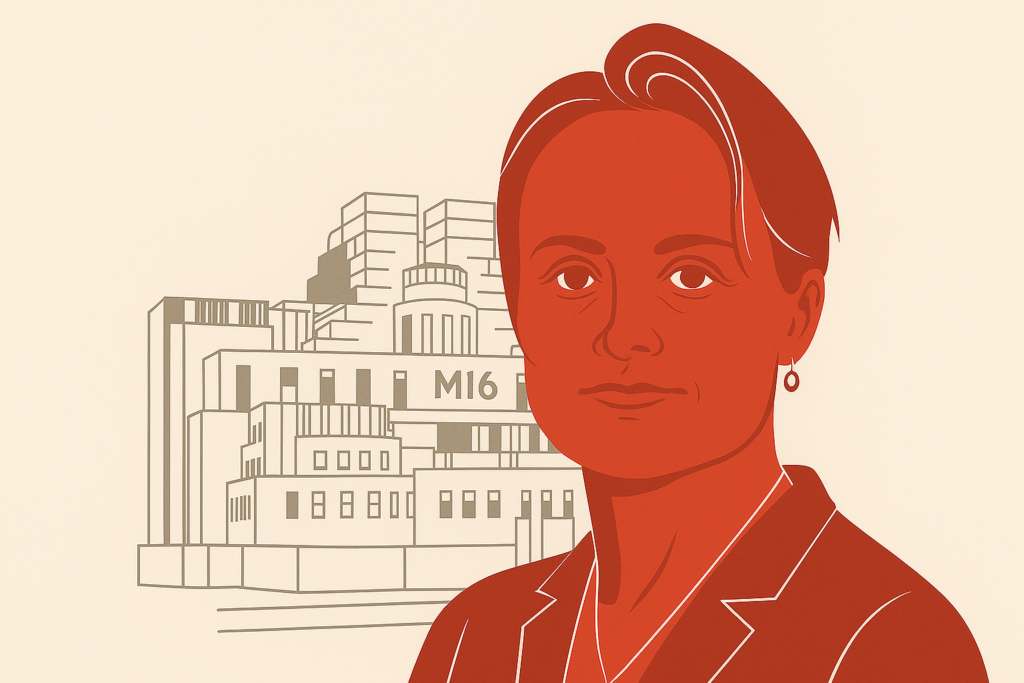Bank of England dovishness should come as little surprise
UK GDP growth was negligible over Q2-Q3 2019 – averaging only 0.04% qoq – and likely remained weak in Q4 at about 0.3% qoq. There are a number of endogenous and exogenous factors, both cyclical and structural, behind this weak domestic growth – a number over which the Bank of England has arguably little or no influence.
However, there is a lagged, inverse historical relationship between the “real” central bank policy rate (the nominal Bank of England (BoE) policy rate deflated by core CPI-inflation) and UK GDP growth. When real interest rate policy is tight/loose, GDP growth tends to be weak/strong. Therefore, to the extent that the BoE sets monetary policy – including the policy rate – it can influence the “real” policy rate and, albeit with a lag, GDP growth.
The “real” policy rate remains high relative to GDP growth, according to our analysis (see Figure 1). Moreover, we think the risk is biased towards UK CPI-inflation, which remains below the BoE’s 2% target, falling in coming months, partly due to the disinflationary impact of a stronger Sterling and a slowdown in nominal wage growth. If this proves correct, and assuming that the BoE keeps its policy rate unchanged at 0.75%, as it has done since August 2018, the “real” policy rate will rise further in coming months and put further downward pressure on GDP growth.
In this context it is perhaps unsurprising that BoE Governor Mark Carney, who will step down on 30th January, in a speech on 9th January talked up the possibility of a relatively prompt response from the central bank, including rate cuts, in the event of downside risks to growth persisting. Markets, which on 7th January were pricing 7bp of rate cuts by May, are now pricing in 10bp of cuts (or a 40% probability of a 25bp rate cut).
After all, in the global context of developed economy central banks, the BoE’s 0.75% policy rate no longer appears that low. The Reserve Bank of Australia and Reserve Bank of New Zealand have both cut their policy rates to respectively 0.75% and 1.00% (with markets pricing in more easing this year), Japan’s policy rate is -0.10% and the European Central Bank’s has taken its policy rate further into negative territory
(-0.5% deposit rate). In the past 13 months, only three major central banks (Czech, Norway and Sweden) have hiked their policy rates in net terms.
Bank of England likely to remain dovish even if it stops short of cutting rates
A rate cut at the BoE’s policy meeting on 30th January remains very unlikely, in our view. For starters it will be Carney’s last meeting in charge and he will want to give the onus to his successor, Andrew Bailey (currently the head of the Financial Conduct Authority). Moreover, this meeting will coincide with the UK’s official departure from the EU, assuming that there are no hiccups between now and end-month. Finally, it is unlikely that a majority of the nine MPC members currently favours a 25bp rate cut. At the 19th December meeting, only Michael Saunders and Jonathan Haskel – arguably the two more dovish Monetary Policy Council (MPC) members – voted in favour of rates being cut to 0.50%, pointing to some slack in the labour market and downside risks from slowing global growth and Brexit.
A rate cut at the 26th March policy meeting would not be inconceivable but we think the MPC would be more likely to pull the trigger at the 7th May meeting, for two related reasons. First, the BoE will publish on this date its second quarterly Monetary Policy Report of the year (formerly “the inflation report”), which includes its latest macroeconomic projections. By this point the BoE, and the new governor, will have had more time to assess i) the impact (if any) of the UK’s departure from the EU on the domestic economy, ii) the progress of UK-EU negotiations over a new trade deal (which UK Prime Minister Johnson seems determined to close by end-2020) and iii) the likely nature of such a trade deal (i.e. “soft Brexit” vs “hard Brexit)”.
Even if the BoE stops short of cutting its policy rate at its next three meetings, we expect the overall tone of the MPC, under Carney and then Bailey, to remain dovish and we see a risk of a few more MPC members joining Saunders and Haskel and voting in favour of a 25bp rate cut. While there are signs that the Brexit uncertainty which has weighed on domestic consumption and investment is abating, we would expect the BoE to privilege looser monetary policy in the form of lower government bond yields/market rates and a weaker (or at least stable) currency. If this proves correct, we would expect Sterling – which has been range-bound since its post general election bounce – to continue treading water (see Figure 2).
UK GDP growth – Little to cheer about
UK GDP growth in Q2 and Q3 2019 was, in aggregate, less than 0.1% qoq, with year-on-year growth falling to a decade-low of just 1.0% in Q3 (see Figure 3). Moreover, based on monthly data, GDP growth likely remained weak in Q4.
The National Institute of Economic & Social Research in its 10th December report forecast GDP growth in Q4 at just 0.1% qoq while the Bank of England in its 7th November monetary policy report forecast growth of 1.0% yoy – which would imply quarter-on-quarter growth of only 0.3-0.4% according to our calculations (assuming no revisions to prior data).
Our own analysis suggests that weak economic activity in the services and in particular manufacturing sectors weighed on overall economic growth in Q4. Figure 4 shows a reasonably strong, positive historical correlation between the UK composite PMI (a weighted average of the PMI output in the two sectors) and GDP growth. Based on this relationship, GDP growth in Q4 was about 1.3% yoy or 0.6% qoq.
However, in nine of the past ten quarters, GDP growth was weaker than implied by the composite PMI (by 0.35 percentage points in Q3 2019). We therefore think that GDP growth in Q4 was closer to the Bank of England’s forecast – i.e. about 0.3% qoq. If correct this would imply that quarter-on-quarter GDP growth averaged only 0.1% over Q2-Q4, that year-on-year GDP growth remained below 1.0% in Q4 and reached only 1.3% in the full-year 2019 – the slowest annual growth rate since 2009.
UK CPI-inflation stuck below BoE target and risk of falling in coming months
UK core CPI-inflation in November was at the low-end of a 1.5-2.1% yoy range in place since April 2018 while headline CPI-inflation in November remained at a 3-year low of 1.5% yoy – in both cases below the BoE’s 2% inflation target (see Figure 5). Weaker international commodity prices and Sterling appreciation, which in NEER terms reached 5.3% yoy in December, have led to a fall in imported inflation and in turn in PPI-inflation to just 0.5% yoy (see Figures 6-8).
Finally falling producer price-inflation has, with a lag, contributed to the fall in headline CPI-inflation (see Figure 9). The slowdown in nominal weekly wage growth to around 3.2% in August-October from 3.7% yoy at end-2018 has also likely contributed to weaker inflation expectations and ultimately core CPI-inflation, in our view.
The combination, in recent months, of a spike in international commodity price inflation (Figure 6) but still strong Sterling appreciation (Figure 7) suggests that imported inflation and UK PPI-inflation are unlikely to rise much, if at all, in coming months (December CPI-inflation data are due to be published on 15th January). If correct, the risk to CPI-inflation is probably biased to the downside which would in turn imply that the BoE’s “real” policy rate could rise further and move further out of synch with weak domestic GDP growth.














